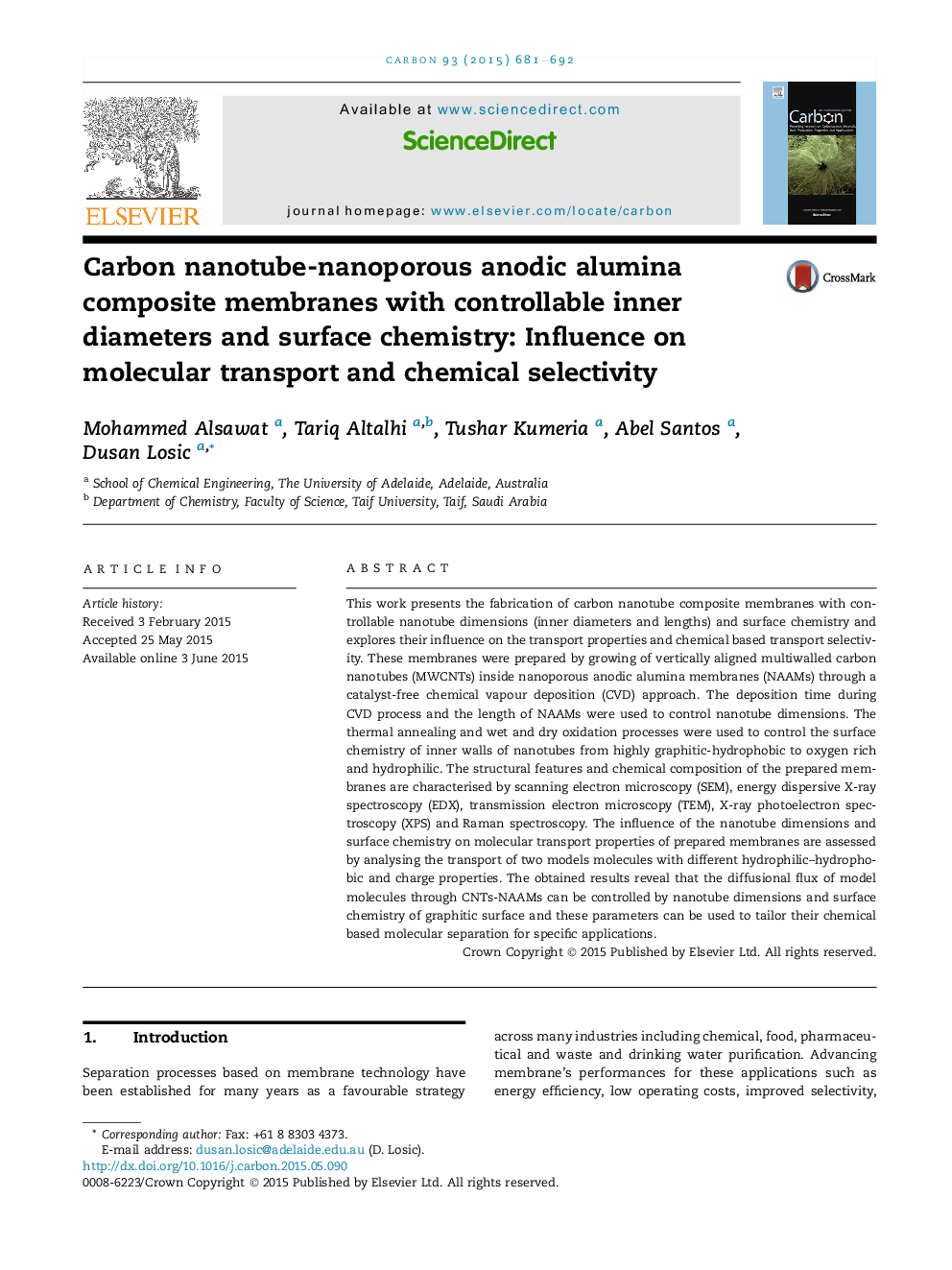| Article ID | Journal | Published Year | Pages | File Type |
|---|---|---|---|---|
| 7851787 | Carbon | 2015 | 12 Pages |
Abstract
This work presents the fabrication of carbon nanotube composite membranes with controllable nanotube dimensions (inner diameters and lengths) and surface chemistry and explores their influence on the transport properties and chemical based transport selectivity. These membranes were prepared by growing of vertically aligned multiwalled carbon nanotubes (MWCNTs) inside nanoporous anodic alumina membranes (NAAMs) through a catalyst-free chemical vapour deposition (CVD) approach. The deposition time during CVD process and the length of NAAMs were used to control nanotube dimensions. The thermal annealing and wet and dry oxidation processes were used to control the surface chemistry of inner walls of nanotubes from highly graphitic-hydrophobic to oxygen rich and hydrophilic. The structural features and chemical composition of the prepared membranes are characterised by scanning electron microscopy (SEM), energy dispersive X-ray spectroscopy (EDX), transmission electron microscopy (TEM), X-ray photoelectron spectroscopy (XPS) and Raman spectroscopy. The influence of the nanotube dimensions and surface chemistry on molecular transport properties of prepared membranes are assessed by analysing the transport of two models molecules with different hydrophilic-hydrophobic and charge properties. The obtained results reveal that the diffusional flux of model molecules through CNTs-NAAMs can be controlled by nanotube dimensions and surface chemistry of graphitic surface and these parameters can be used to tailor their chemical based molecular separation for specific applications.
Related Topics
Physical Sciences and Engineering
Energy
Energy (General)
Authors
Mohammed Alsawat, Tariq Altalhi, Tushar Kumeria, Abel Santos, Dusan Losic,
